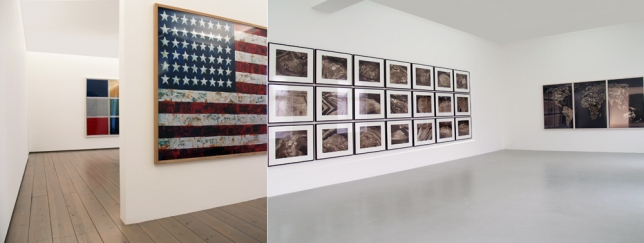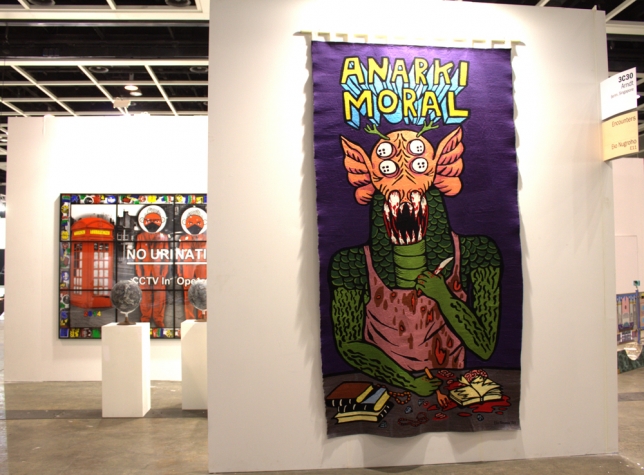3.04. - 20.06.2009
VIK MUNIZ
Solo exhibition at Arndt & Partner, Zurich
PRESS RELEASE:
Arndt & Partner are pleased to introduce the conceptual photography of Brazilian artist Vik Muniz to a Swiss audience, following his successful first solo exhibition in Germany at Arndt & Partner's Berlin gallery.
In a labor-intensive and meticulous process, Vik Muniz reproduces images the Western viewer is familiar with from the print media, such as art masterpieces or legendary photographs from news magazines. After he has created his replicas, using a wide range of materials such as powdered pigment, dust, garbage or luxury foods like sugar, chocolate and caviar, he photographs them and then destroys them so that they only exist as photographs. Viewed from a distance, the illusionistic effect and the resemblance of his works to the original pictures are striking. However, when seen up close the images dissolve into a chaotic array of materials, thus turning the attention of the viewer to the symbolic meaning and the formal characteristics of the substances as well as to the elaborate production process. The materials used always have a contextual link to the original images, thus adding another level of meaning. For example, he drew his early portrait series of children whose parents work on Caribbean sugar plantations with white sugar on black paper (Sugar Children, 1996), and his "Pictures of Dust" (2000) - reproductions of photographs documenting minimalist sculptures at the Whitney Museum of American Art - are executed in dust collected from the museum's exhibition spaces.
His most recent series, "Pictures of Garbage" (2008), presented at Arndt & Partner, is conceived as a long-term project in collaboration with the residents of Jardim Gramacho, home to Latin America's largest garbage dump. Vik Muniz takes photographic portraits of these people who earn their living by scavenging recyclables, and with their help creates gigantic versions of the portraits, modeling them after famous paintings such as J. L. David's "The Death of Marat", J. F. Millet's "The Sower", P. Picasso's "Women Ironing" or Il Guercino's "Atlas". The material used is garbage from Jardim Gramacho, yet the figures are formed by the empty spaces between the items. Thus, the people portrayed seem to be stepping forward from the chaos of the garbage and leaving it behind them.
The series encompasses seven different images, each of which is printed in two different formats. Fifty percent of the proceeds from the sales of the larger prints is passed on to the Garbage Pickers Association of Jardim Gramacho, which was founded to support the 5,000 workers and their families whose lives are about to be dramatically affected by the imminent closure of the dump.
In his series, "Pictures of Paper" (2008), Muniz reproduces well-known black-and-white pictures by photographers such as August Sander, Dorothea Lange, Edward Weston and Hein Gorny. He uses paper cutouts in black, white, and three different shades of gray - corresponding precisely to the gray-scale values in the originals - and layers them to create a paraphrase of the original photograph. As Holger Birkholz points out, "It is a method that requires careful planning and a considerable capacity for abstraction. The original must be analyzed and transferred to an entirely different medium, in this case from a photograph to a kind of silhouette. During this transfer, the medium of the model and that of its reproduction enter into a relationship that incorporates the content of both. The medium of the silhouette is often considered a precursor to photography, as it, too, uses light to produce an image. Thus it verges on the ironic that the silhouettes so painstakingly produced by Muniz serve merely as the subject for photographs and are then destroyed. In the end, the enlarged photograph is all that remains. The photographs in "Pictures of Paper" are lit from the side so that the bas-relief-like layers of paper are clearly discernible upon closer inspection. However, when viewed from a distance it appears to be a two-dimensional medium, albeit one in which the illusion of spatial depth approaches perfection." Because Vik Muniz's photographs seduce viewers into continuously moving back and forth before them, they allow them to become aware of the corporeality of perception.









